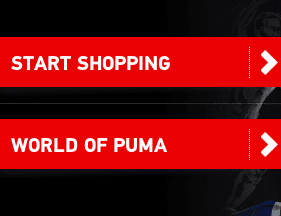Online B2B revenues in the U.S. are rapidly growing, to $1 billion per year according to published reports. The reasons for this growth are twofold.
First, more manufacturers and distributors are investing in their own online channels. There is finally a realization at the board level that ecommerce increases revenue, lowers costs, and increases profits.
Second, more business buyers are seeking to make purchases online rather than traditional channels. Business buyers are now largely millennials — in their 30s — and they prefer to shop online. Moreover, most buyers research products online before they contact a sales representative, which is both an opportunity (selling online) and challenge (competing with sales reps) to existing sales channels.
Business buyers are now largely millennials — in their 30s — and they prefer to shop online.
Whether a company is investing in a B2B online stores for the first time or changing an existing B2B platform, it should, in my experience, focus on four key areas:
- Customer experience;
- Content;
- Personalization;
- Integrations.
These areas are tightly intertwined. Failure to execute in one of these areas will dramatically impact all the others. This article explores each one.
Customer Experience
The bar has been set high by B2C retailers. Consumers expect fast sites that are accessible from any device, with helpful content, ratings and reviews, and compelling merchandising. They expect robust search and navigation, and simple checkout. Online chat is almost a given.
Business buyers expect even more. Since they frequently reorder the same items, they want access to order history, inventory availability, and freight options. Rather than calling a sales representative for a large purchase, they want the ability to request a quote online. Businesses also want to accommodate their corporate buyers, who typically purchase products for many locations. Their pricing history and catalog should be readily available. Budgets and purchase history should be easily accessed.
A few years ago, B2B ecommerce sites had limited product information, relying instead on terse descriptions with the assumption that customers ordering online already know their part numbers. Today, customers demand detailed product information, images, videos, data sheets, and so forth. In reality, more content is now required for the B2B market than the B2C market in many cases.
The customer experience is now dependent on content, personalization, and data — as well as good design and a solid technology platform.
Content
Content is now critical for online B2B success. This can be challenging for distributors. For manufacturers, it is critical to create rich content for their own online stores as well as for their sales channels. Let’s examine both the types of content, as well as how to create and distribute it.
Creating content does not have to be complex. Good content includes all the product information a buyer needs to make a decision. This includes SKU numbers, manufacturer name, geographic origin, specifications, dependencies, unit of measure, price, and so forth. It should also include short and long descriptions, user manuals, installation manuals, material safety data sheets and hazardous material information. Multiple images of a product are mandatory; videos are becoming more common.
All content should be normalized as much as possible. This allows for product comparisons and helps the customer experience. Content must also be localized for international markets and buyers.
For distributors, this almost certainly means investing in a merchandising team to normalize and enhance content as the quality from manufacturers is likely to vary. Investing in a question-and-answer forum is a good way to aggregate and create relevant content and add value to your online store.
For manufacturers, content must be available for offline and online channels, as most materials are reused online and in physical stores. Manufacturers should also invest in systems to syndicate and distribute content to channel partners.
Manufacturers that do not make content available to distributors will be at a disadvantage online as rich content — graphics, video — is likely to win out in the long run, even over price advantages.
Personalization
Personalization is becoming the framework for the B2B customer experience with personas and on-site behaviors determining what products and promotions are presented to buyers.
Many manufacturers and distributors are investing in customer catalogs and pricing, even micro-sites that are tailored to a given company. Once a buyer logs in, persona-based personalization should be leveraged to present merchandising offers that match that buyer’s purchase history, geographic location, and seasonal offers.
The next step in personalization is to mimic what contributes to success in B2C sites: behavioral personalization. B2B sites are already investing in the same integrations as B2C sites to aggregate data about a buyer. They are aggressively using third party tools such as Monetate and Certona to present recommendations based on other buyers’ behaviors.
B2B sites should link to product purchase histories from accounting systems and data warehouses. Some observers call this the Holy Grail of B2B ecommerce. It will likely be a focal point for years. It requires deep integration into financial systems, business intelligence systems, and with third-party tools that make recommendations and present offers.
Integration
This leads to the final strategic area of focus: integrations. B2B ecommerce requires deep and seamless integrations into many systems that almost always include customer records, products, pricing, and inventory. Typical integrations include the following.
- Enterprise resource platforms (ERP) for customer information, pricing, order management, order history, inventory availability, and so forth.
- Customer-relationship management (CRM) platforms for customer information, quoting systems, sales rep assignments, and, in some cases, pricing.
- Tax systems.
- Freight systems.
- Credit-card payment gateways.
New integrations are now often required with behavioral analytics tools, merchandising solutions, recommendation engines, and third-party marketing databases. Advertising platforms will likely work their way into B2B sites, to allow manufacturers to feature their products on distribution sites.
Summary
None of these areas are simple to build. They require substantial initial investments as well as ongoing maintenance. Consider retaining, on the front end, advisers who understand digital marketing and system integrations.
B2B companies don’t need to address all aspects during the first phase. Ecommerce is an ongoing program. Customer experience, content, personalization, and integrations are keys for success.




